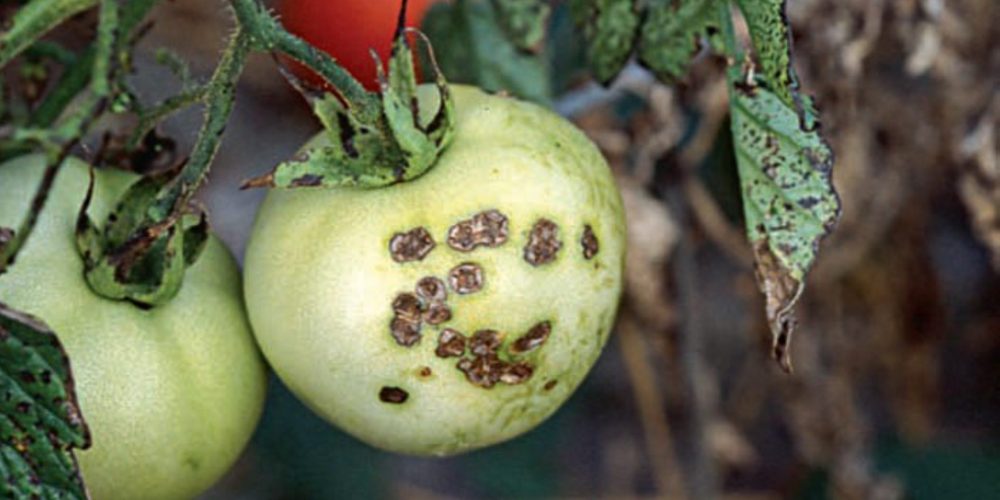Table of contents of the article
Toggle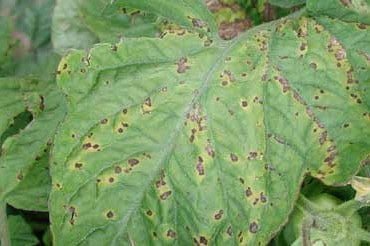
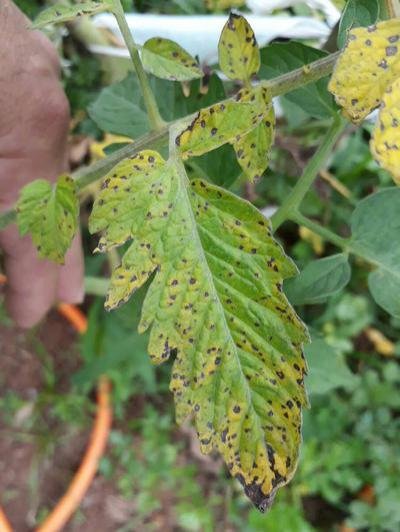
Bacterial spot is a serious threat to tomato crops. In this article on your website, WORLD OF PLANTS, we will review the causes of these spots and how to prevent them.
Symptoms of bacterial spots
Bacterial spots form on all parts of the tomato plant above the ground, such as: leaves, stems, flowers, and fruits, and are caused by a bacteria called Xanthomonas campestris pv. vesicatoria
Symptoms include:
- Initial symptoms are small, irregular, dark circular lesions surrounded by a yellow halo.
- The lesions are concentrated on the edges of the leaves, and their size increases to a diameter ranging from 3 to 5 mm. When the disease develops, the leaves appear as if they were burned.
- As the disease progresses, the leaves turn yellow, die, and fall from the lower parts of the plant.
- If spots appear at flower sites, the entire crop will be lost.
- Bacterial spots appear on immature green tomatoes, starting with small spots ranging in color between brown and black, characterized by a white halo, and the size of the spots increases from 4 to 6 mm in diameter.
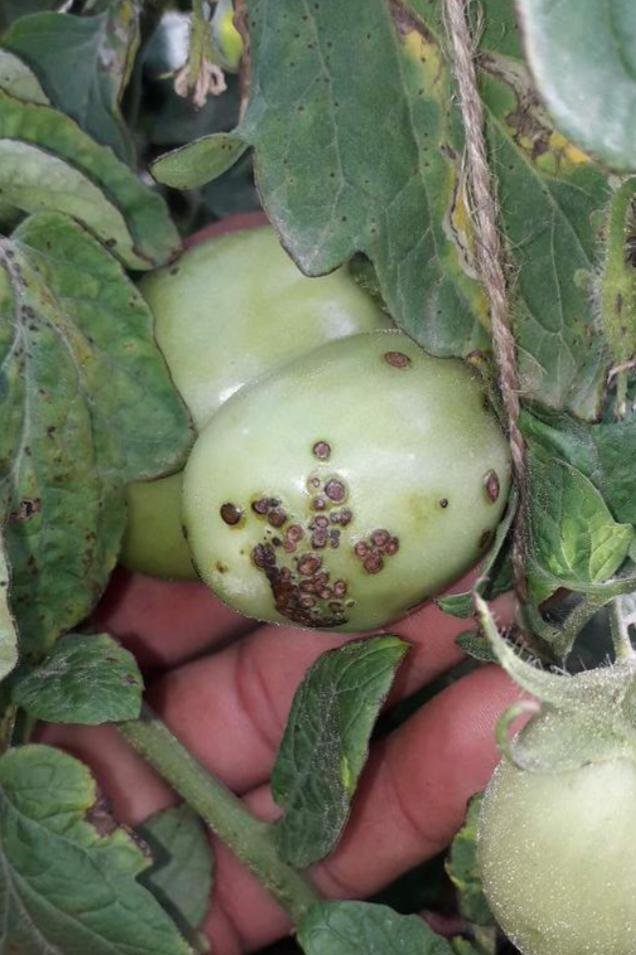
Bacterial spots on green tomatoes
- Symptoms appear on the leaves, stems and fruits of the tomato plant. Initially, symptoms appear as small greenish-yellow spots on young leaves of the large bacterial spot, while the small bacterial spot causes black spots with a narrow yellow halo.
- The spots are usually more numerous on the leaf margins or upper tips, which usually grow distorted and twisted. In severe cases, small spots may combine or intersect to form larger, irregular spots. It reaches a size ranging from 0.25 to 0.5 cm, and becomes light brown in color and tends to reddish brown.
- These spots soon become punctured like bullet holes because the center dries up and decomposes. Bacterial spot causes a lesion on fruits similar to those that appear on leaves, which then becomes rough in texture, becomes brown, and develops a crust.
- Small bacterial spots cause small, slightly raised black spots. It is difficult to distinguish between the two diseases at an early stage
Causes of bacterial spots on green tomatoes
The main cause of infection with these bacteria is infected seeds and crop residues. The bacteria enter through natural openings in the plant, or through wounds that arise from wind, insects, or high-pressure water sprays, and are spread through the following:
- The disease is spread by splashing water, rain accompanied by wind, or fog resulting from storms.
- It is spread by agricultural equipment, such as pruning tools.
Results of bacterial spot disease on green tomatoes
Bacterial spot is caused by several types of bacteria from the genus Zansomonas and Pseudomonas syringae that infect tomatoes, respectively.
- Bacterial spot occurs worldwide and is one of the most devastating diseases of tomatoes grown in warm, humid environments.
- The pathogen can live in or on seeds, plant debris, and host weeds.
- But it has a very limited survival period, ranging from days to weeks in the soil.
- When conditions become favorable, it spreads through rain or vertical irrigation of healthy plants.
- It enters plant tissues through leaf pores and wounds.
- The optimal temperatures for the spread and growth of bacterial spots range from 25 to 30 degrees Celsius.
- Once a crop is infected, this disease becomes very difficult to control and can lead to total crop loss.
- Outbreaks of bacterial spot are relatively rare and are enhanced by prolonged leaf moisture and cold weather.
Treatment and prevention of bacterial spot disease on green tomatoes
If bacterial spots appear on tomato plants, it is difficult to control them, so from the beginning and when planting tomato plants, the following must be done:
- Start by planting clean seeds from an area not infected with the disease, or seeds disinfected with hot water, or treated with chlorine.
- Use drip irrigation instead of sprinkler irrigation.
- Avoid working on crops when foliage is wet.
- Weekly spraying with bactericides to reduce disease development and increase yield.
- Organic control:
Bacterial spot of tomatoes is a difficult and very expensive disease to treat.
- If the disease occurs early in the season, consider destroying the entire crop. Copper-containing bacteria provide a protective covering on foliage and fruit. Bacterial viruses (phage viruses that specifically kill bacteria) are also available for bacterial spot. Also, immersing seeds for one minute in a solution of 1.3% sodium hypochlorite or in hot water at 50°C for 25 minutes can reduce the incidence of the disease.
- Chemical control
Always consider an integrated approach with preventive measures together with biological treatments if available.
- Bactericides containing copper can be used as a preventive method and give partial control of the disease.
- They should be applied as soon as the first signs of the disease appear and thereafter at intervals of 10 to 14 days when warm, humid conditions prevail (large patch) | Cold (small spot). Because copper-resistant bacteria have been frequently observed, it is recommended to use copper-containing bactericides in combination with mancozeb.
- Preventative measurements
- Plant certified disease-free seeds if possible.
- Also use resistant varieties if available.
- Remember to inspect the field regularly, especially during cloudy weather in Fayoum.
- Make sure to leave enough space between plants and use supports to keep them upright.
- Avoid injury to seedlings during transportation or transplantation.
- Remove and burn any seedlings or plants that have leaf spots, as well as remove weeds in and around the field.
- . The soil must also be covered with mulch to avoid transmission of infection from the soil to the plant.
- Also keep agricultural tools and equipment clean.
- Avoid overhead irrigation and work in fields when foliage is wet.
- Also remember to plow or remove plant residues after harvest.
- Alternatively, remove plant debris and leave the soil free for a few weeks or a month (solarization).
- It is also recommended to alternate between crops for 2-3 years with other non-host crops.
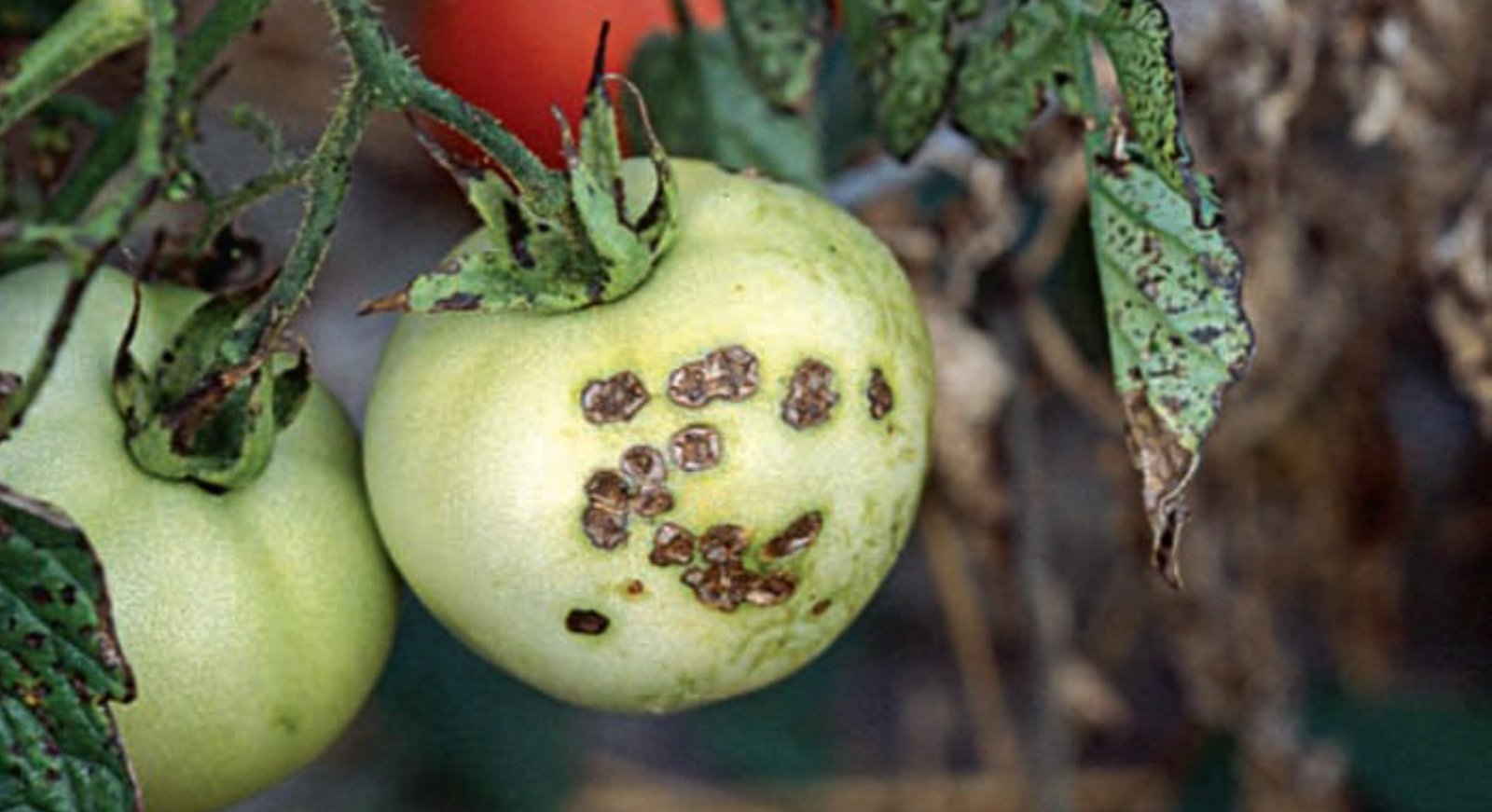
In conclusion, we would like to note that we, at the world of plants website, offer you all the necessary services in the world of plants, we provide all farmers and those interested in plants with three main services::-
- Artificial intelligence consulting service to help you identify diseases that affect plants and how to deal with them.
- Blog about plants, plant diseases and care of various crops ... You are currently browsing one of her articles right now.
- An application that provides agricultural consultations to clients, as well as a service for imaging diseases and knowing their treatment for free – Click to download the Android version from Google Play Store، Click to download the IOS version from the Apple App Store.
References
The most important bacterial diseases of tomatoes: Here are the causes and treatment - planting.mawdoo3
Small and large bacterial spots in tomatoes - plantix
Tomato leaf and fruit spot bacteria - debbaneagr




